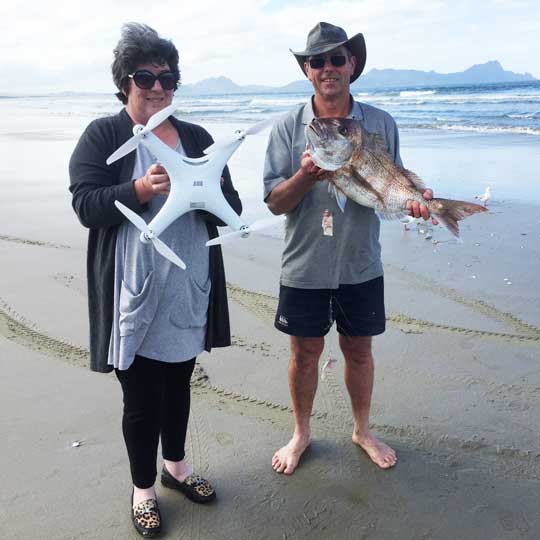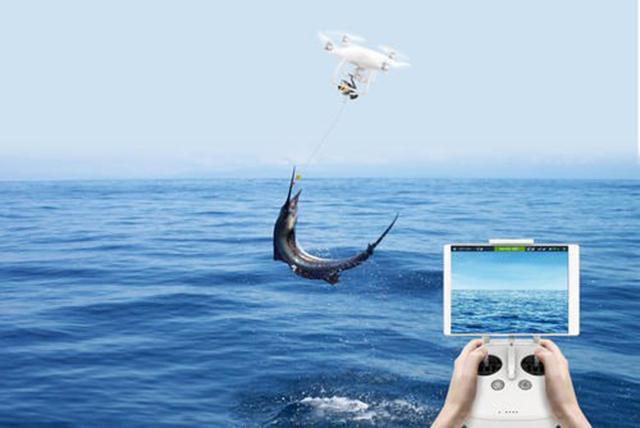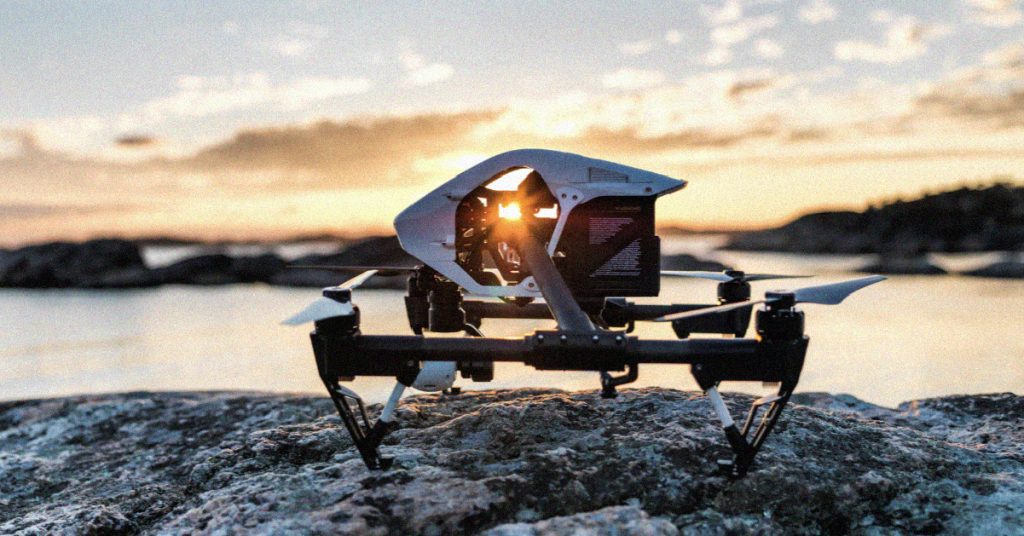
This article will discuss the basics behind a drone fishing system. We'll also look at what to pay attention to when choosing your drone, battery life, and payload. We'll then discuss ways to get the best out of your drone. Keep reading to learn more. You'll soon have the drone of your dreams! Let's go !... and maybe catch some fish!
Basic drone fishing gear
A good set of hooks is the most important thing when you want to begin drone fishing. The fishing line should be doubled and should be mono or braid. A Cat's Paw Loop or Uni knot should be tied to the fishing line. You will also need a sinker (2-8 oz) and hooks (to attach to each section of the backbone). You will also need to attach the end loop and snap swivel lead loops to your drone.
There are many methods to make a fishing helicopter. One basic method involves attaching a hook on the drone's landing gear and spinning the line until it releases. Droppers and drop lines can be used to keep the fishing net below the drone. Droppers allow you to keep your main line under the drone, without it getting tangled up with propellers. Fishing drones can be outfitted with accessories such as a dock or a battery pack.
Once you have the basic drone fisherman rig purchased, you will need additional equipment. You will need a long fishing line (about 700 meters), as well as a bait-dropping device. These are optional, but they will make drone fishing more fun. A drone will provide you with a clearer view and make it easier to spot fish.

Payload on drone fishing gear
Safety precautions must be followed if you are going to fly a drone to catch fish. Avoid flying your drone in strong wind or rain. Here are some steps to follow:
First, ensure that the drone has enough weight to support its weight. It will not be stable when loaded with braided line or heavy lures. If you are fishing near the seaside, wind can blow the drone off course. It's also important to check local regulations and laws, as some may not allow fishing from a drone. A drone with good carrying capacity is essential if you plan to fish from it.
Next, decide what accessories you will mount on your drone. To reduce weight distribution problems, a good rule of thumb is that your rigging system should have a central attachment. The most suitable attachment points are the motor struts, landing gear, and legs of the drone. Avoid attaching payloads to your camera or gimbal, as they can be damaged. The easiest solution is to tie some fishing line along the length from one corner to another. This can be secured with tape to prevent it from falling out.
Battery life of drone fishing rig
Before you go fishing with the drone, check that the batteries are charged and all other equipment is working properly. This will allow you and your drone to have a longer battery life. Some drones have solar panels or car batteries that allow you to charge them. Make sure your batteries are fully charged before you start. This will ensure your drone is ready for flight as soon as your reach your fishing spot.

A drone's flight times are another important consideration. Although some drones have longer flight times, others can fly for as little as twenty-two seconds. This is great if you're looking to spend hours on the water with your drone. But you should be aware that a drone with limited endurance will be inoperable and will make it nearly impossible for you to catch fish.
After setting up your fishing rod, attach the fishing clip to the drone's legs or motor struts. Attach the bait and line to the drone. Be sure to lock the reel before you fly the drone and unlock it when you're ready to drop the bait. When you take the line out, tension builds and the drone drops the bait in the water. The battery may not work properly if it isn't charged after each use.
FAQ
Is it safe to fly a drone while driving?
Drone flying while driving can be dangerous as you may collide with another vehicle or object. You may also run into pedestrians and other animals. A collision with power lines, trees, buildings, or power lines could cause serious damage to your vehicle.
Can I fly my drone indoors without a license?
Yes, it is possible to fly your drone indoors. There are only a few things you need to do: Make sure your home is free of obstacles and hazards. For example, you should avoid flying near windows, doors, heating vents, air conditioning units, electrical outlets, water pipes, and fireplaces.
Can I fly my drone through my neighborhood?
Yes! These are called UAVs (unmanned aircraft vehicles). There are many types of drones on the market today, including small quadcopters and large fixed-wing aircraft. The FAA recently released new rules for commercial UAV use, meaning that they are now legal to fly for business purposes. Be aware that UAVs operating near airports could cause interference to air traffic control systems. You must get permission from the authorities before you can fly one.
Is it necessary to have special training in order to fly a drone
No, you don't need special training to fly your drone. A remote control unit is all you need. You also need to have some basic knowledge of flight mechanics.
Is drone regulation regulated by the FAA
The FAA oversees all aspects regarding drone operations, including safety standards and certification requirements.
Can my drone be flown in my local park?
Yes, you can fly drones in parks throughout the world. Safety concerns mean that not all countries allow drones to be flown in parks. You can fly drones legally in these places.
Statistics
- According to industry research from ZipRecruiter , there are 10 cities where the typical salary for a Drone Pilot job is above the national average. (dronesgator.com)
- Research and Markets predict a growth rate of 51.1% over the next five years. (thedroneu.com)
- With the top 10% making over $100/h and the bottom 10% making as low as $10/h. (dronesgator.com)
External Links
How To
How to Fly Drones for Beginners
A drone is a remotely-controlled aircraft that is used for aerial photography and surveillance. Drones have been in use since World War II. DJI's Phantom series of quadcopters was the first to be commercially used. From beginner-friendly drones such as Parrot AR Drone 2.0 through professional-grade multirotor craft like DJI Mavic Pro, many types have been available.
There are several ways to fly a drone, including;
-
Remote control: This uses a remote control device that attaches to your hand and allows you control the drone along its flight path. There are two main types for controllers: Joysticks or On/Off switches, which can be used to control the drone's flight path.
-
Manual Control – This method lets users remotely control the drone by using a smartphone app. Follow the instructions of the app to track the exact location you want the drone go.
-
Autonomous Flying - This allows the drone to take over all of the piloting duties. It basically flies autonomously without any human intervention. A drone must have a builtin camera and sensors capable to capture images and other data.
-
Triggered Flying - This method works in the same way as manual control. However, the pilot has to manually set up a route for the drone and it follows that route until reaching the endpoint. After the preprogrammed route is complete, the drone will automatically land and return to its base.
-
Landing Gear – Some drones are equipped with landing gear, which allows them to safely land if they lose power during flight.
-
Goggles - Some pilots wear goggles to protect themselves from debris while operating.
-
Camera - Some drones can be equipped with cameras which enable you to capture photos from the sky.
-
Obstacles – Some drones have obstacle avoidance systems that stop them from colliding with obstacles.
-
Speed - Some drones reach speeds exceeding 40 mph.
-
Battery Life - Most drones are capable of lasting between 20 minutes and three hours, depending on the power that you use.
-
Some drones are capable of traveling up to 30 miles depending upon their make and model.
-
Power source - Some drones require an external power source; others work off internal batteries.
-
Weight – Some drones are less than one pound, while other models can be up to four pounds.
-
Size - From small drones that can be carried in the palm of one's hand to larger drones that weigh over 50 pounds, drones come in a variety of sizes.
-
Price – All drones fall into a price category. These range from expensive models that cost thousands to affordable options that start at 100 dollars.